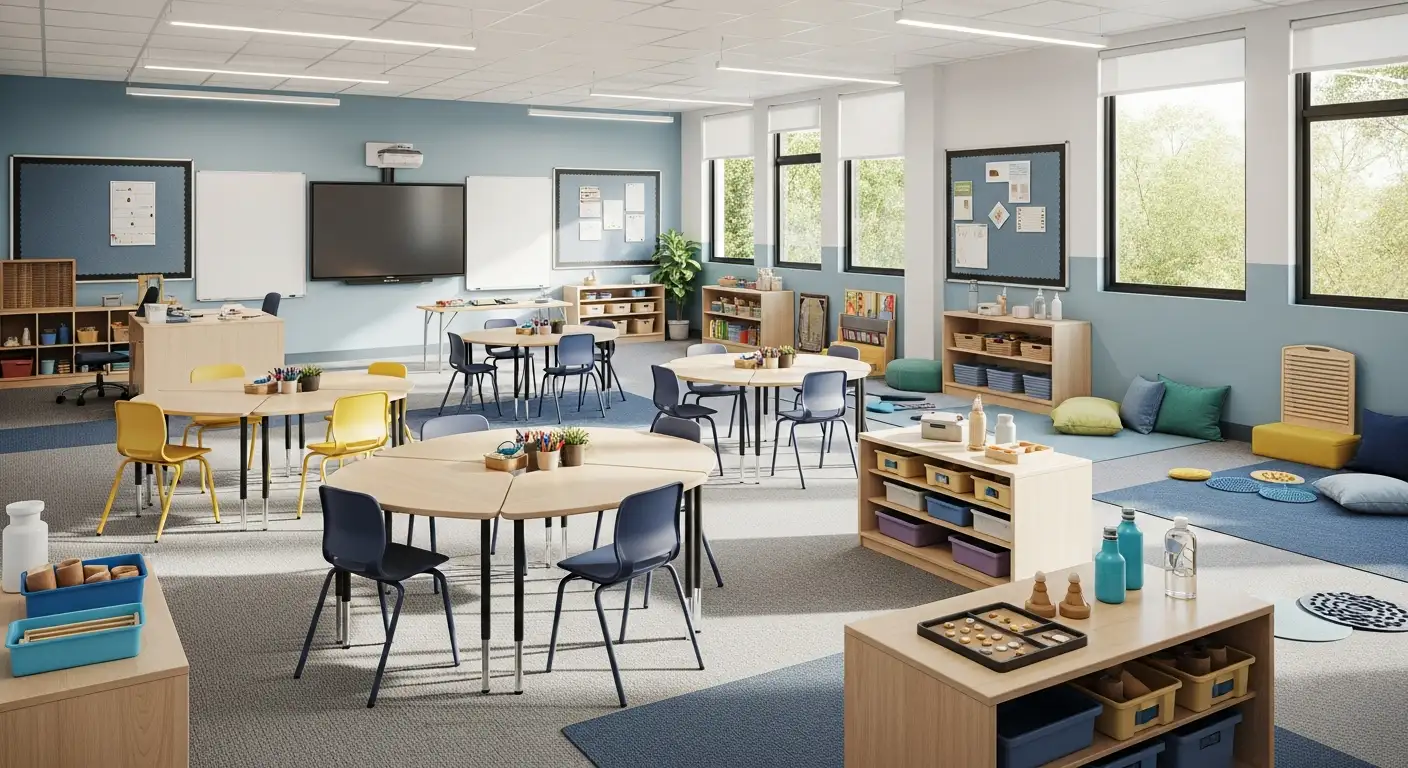Understanding the Role of ABA in Community Readiness
Building meaningful community engagement skills in children with autism is a vital aspect of their development, independence, and overall quality of life. Applied Behavior Analysis (ABA) stands out as a highly effective, evidence-based approach that systematically teaches these skills through personalized strategies, play-based methods, and naturalistic techniques. This article explores how ABA integrates community readiness into its framework, emphasizing its principles, techniques, and the significant benefits for children, families, and communities.
Core Principles and Benefits of ABA in Social and Community Skills Development
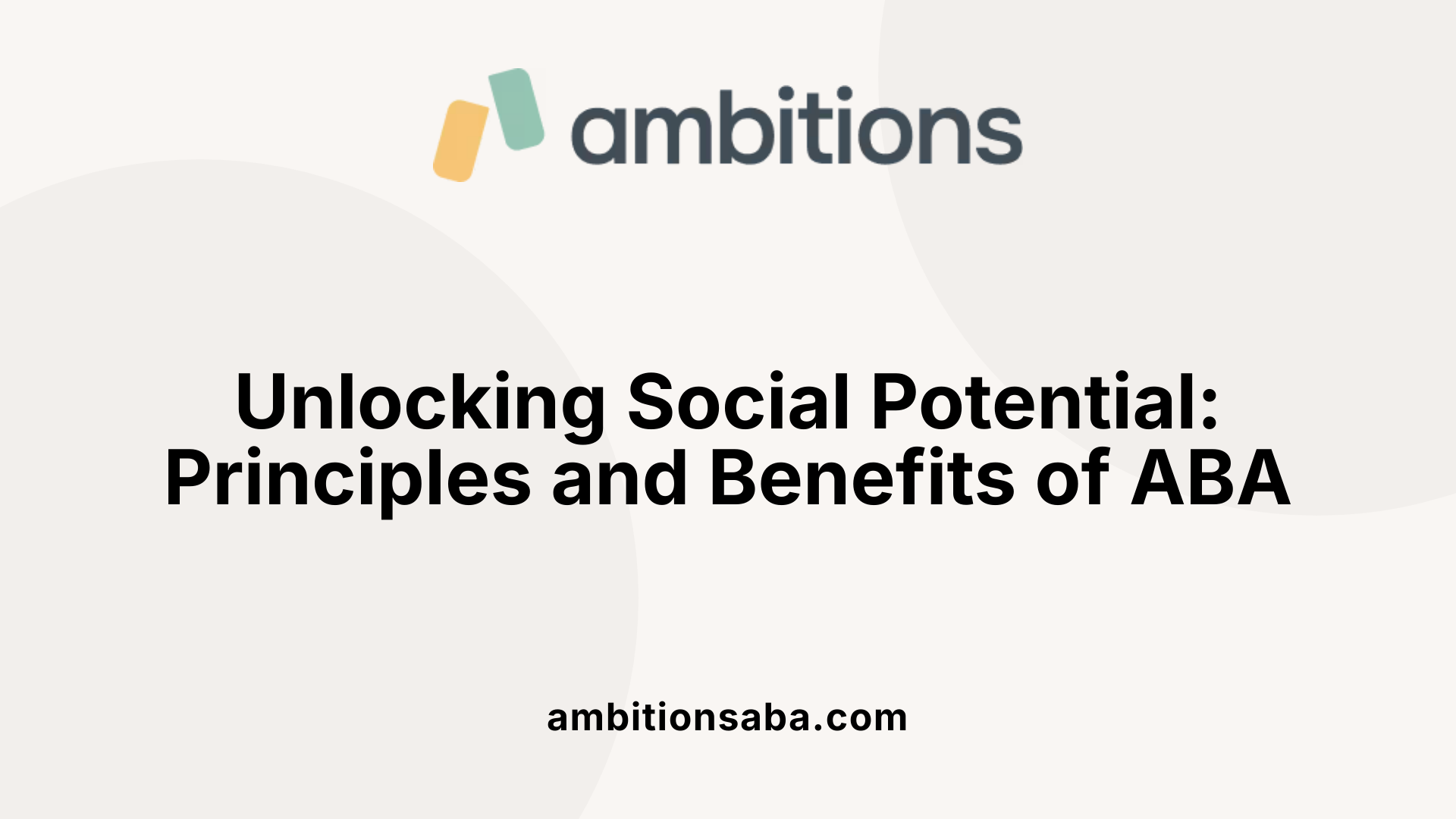
What are the principles and benefits of ABA therapy in supporting community engagement and developmental preparedness?
Applied Behavior Analysis (ABA) is built on core principles such as individualization, positive reinforcement, systematic instruction, and data-driven decision-making. These principles guide therapists in designing tailored programs that focus on socially important behaviors.
One major benefit of ABA is its ability to improve community engagement. Through teaching social skills like making eye contact, greeting others, and understanding social cues, children can participate more confidently in social and recreational activities. Skills such as initiating conversations and forming peer relationships are emphasized, helping children to build friendships and social networks.
ABA also nurtures essential developmental skills. Its methods enhance communication abilities, language skills, and daily living routines—including self-care tasks like dressing and personal hygiene. These improvements make children more independent and better equipped to handle everyday challenges.
In addition to promoting social participation, ABA helps reduce problematic behaviors by teaching functional alternatives. This ensures children can navigate community environments safely and effectively.
Overall, ABA’s structured, evidence-based framework prepares individuals for greater independence. It fosters skills necessary for active participation in community life, ultimately leading to better integration, higher self-reliance, and an improved quality of life.
Enhancing School Readiness and Community Integration through ABA
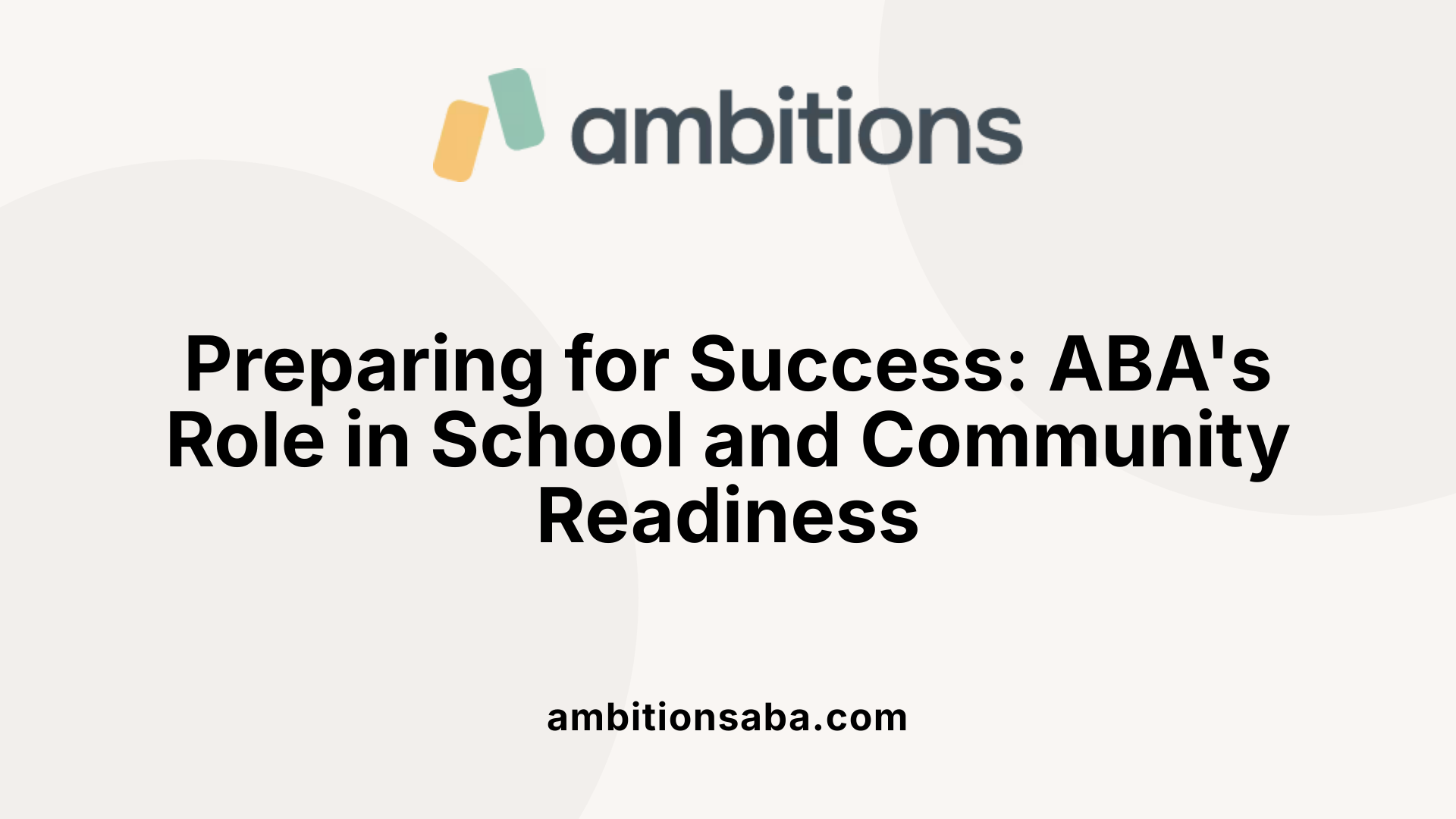
How does ABA contribute to improving school readiness and supporting children's development for community integration?
ABA (Applied Behavior Analysis) plays a vital role in preparing children with autism for school and community life. Through structured, personalized strategies, ABA teaches foundational skills like following directions, matching objects, recognizing symbols, and using writing tools. These skills form the basis of learning and social interaction in educational settings.
In addition, ABA addresses social and communication skill development. Children learn to make eye contact, greet others, ask for help, wait their turn, and engage in conversations. These abilities are crucial for successful interactions in classrooms and community spaces.
ABA also focuses on emotional regulation and behavior management. By teaching children to understand routines and rules, ABA supports smoother transitions into school environments. Practicing skills in real-life contexts such as home, school, and community settings boosts their confidence and independence.
Parents and caregivers are integral to this process. ABA programs encourage family involvement, providing training to reinforce skills at home, ensuring consistency and generalization of learning.
Overall, ABA helps children develop the social, behavioral, and adaptive skills necessary for school success and community participation. It promotes confidence, self-regulation, and independence, laying a strong foundation for lifelong growth and social inclusion.
Using Play-Based Methods to Build Community Skills

How does ABA incorporate community readiness skills through play-based methods and play therapy?
ABA therapy employs play-based approaches to nurture essential skills for community involvement. By integrating engaging, natural activities, therapists help children develop social interaction, communication, and independence within a fun and safe environment.
One popular technique is the Early Start Denver Model, which combines play with behavioral teaching to foster social and adaptive skills. Pivotal Response Training is another method that emphasizes natural reinforcement through play to enhance motivation and communication.
Therapists often create routines that mimic everyday community experiences, such as pretend grocery shopping or playing in a park, to teach children how to navigate social situations calmly and confidently. These activities promote sharing, following directions, and understanding social cues.
Furthermore, ABA supports gradual exposure to community settings by practicing relevant skills in familiar places like the home or clinic before moving to real-world environments. This staged approach builds confidence and competence, making the transition into community participation smoother.
Overall, play serves as a vital tool within ABA to develop community-specific skills, helping children become more active and self-assured participants in their neighborhoods and social groups.
Techniques for Developing Social, Daily Living, and Independence Skills
ABA, or Applied Behavior Analysis, uses various targeted techniques to help children with autism develop essential social, daily living, and independence skills. These methods are individualized to meet each child's unique needs, ensuring effective learning.
One fundamental technique is positive reinforcement, where desirable behaviors are rewarded to encourage repetition. For example, praising a child for following instructions or engaging in social interactions helps reinforce these skills.
Systematic task analysis breaks complex behaviors into smaller, manageable steps. This approach allows children to master each component gradually, building confidence and competence.
Prompting and fading are commonly used to guide children through new skills. Prompting provides cues or assistance, and as the child becomes more proficient, prompts are gradually reduced or faded to promote independence.
Modeling involves demonstrating desired behaviors for children to imitate, creating clear examples of social or daily living skills.
Discrete trial training (DTT) structures teaching into repetitive, focused trials, which can effectively teach foundational skills like communication and self-care.
Naturalistic teaching strategies, or NET, take place in everyday settings like home or community. This approach promotes generalization, helping children apply learned skills across different environments.
By integrating these techniques, ABA programs aim to help children become more independent, improve their social interactions, and navigate daily routines confidently. The overall goal is to foster skills that lead to greater participation in daily life and social environments, ultimately enhancing their quality of life.
Building Social Skills through Evidence-Based Strategies
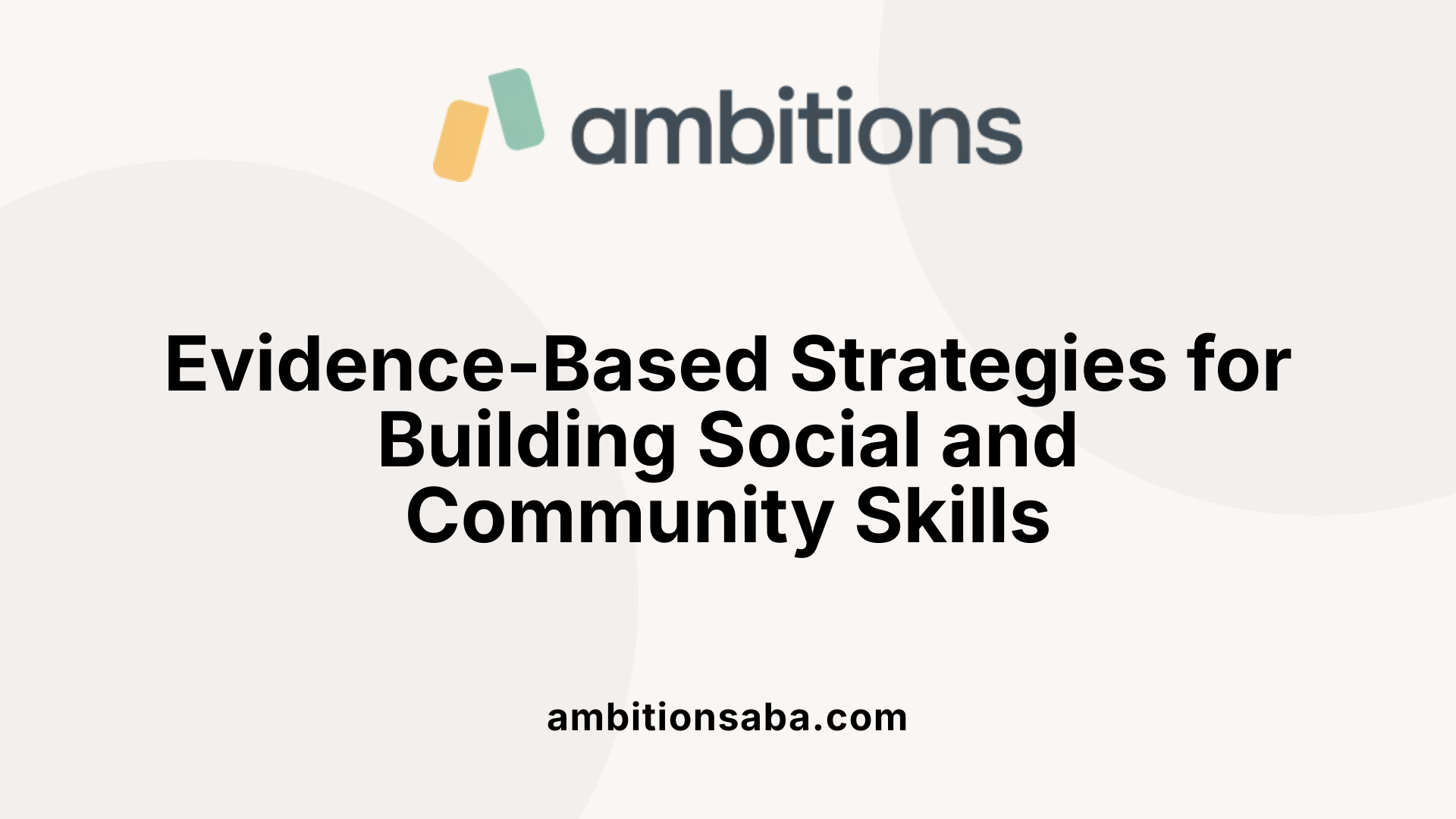
What strategies does ABA use to build community and social skills in children with autism?
Applied Behavior Analysis (ABA) employs a variety of proven techniques to develop social and community skills in children with autism. One fundamental method is task analysis, which involves breaking down complex social behaviors into smaller, more manageable steps. This makes it easier for children to learn and practice skills like greeting others, sharing, or taking turns.
In addition to task analysis, ABA therapists utilize methods such as modeling, role-playing, prompting, shaping, and positive reinforcement. For example, therapists may demonstrate appropriate social behaviors, encourage children to imitate these actions, and reward successful attempts to foster learning.
Naturalistic teaching approaches are also prominent. Natural Environment Teaching (NET) integrates social skill practice into everyday situations, like playground play or family routines. Peer interactions and social skill groups allow children to generalize skills in real-world settings, increasing their confidence to participate in community activities.
Visual supports, such as social stories and cue cards, assist children in recognizing social cues and understanding expectations. Therapists work closely with families to set individualized goals, ensuring that skill development aligns with each child's needs.
Overall, these strategies promote meaningful social engagement, helping children with autism develop essential community skills that foster inclusion and independence.
Community Readiness in Natural Settings and Family Roles
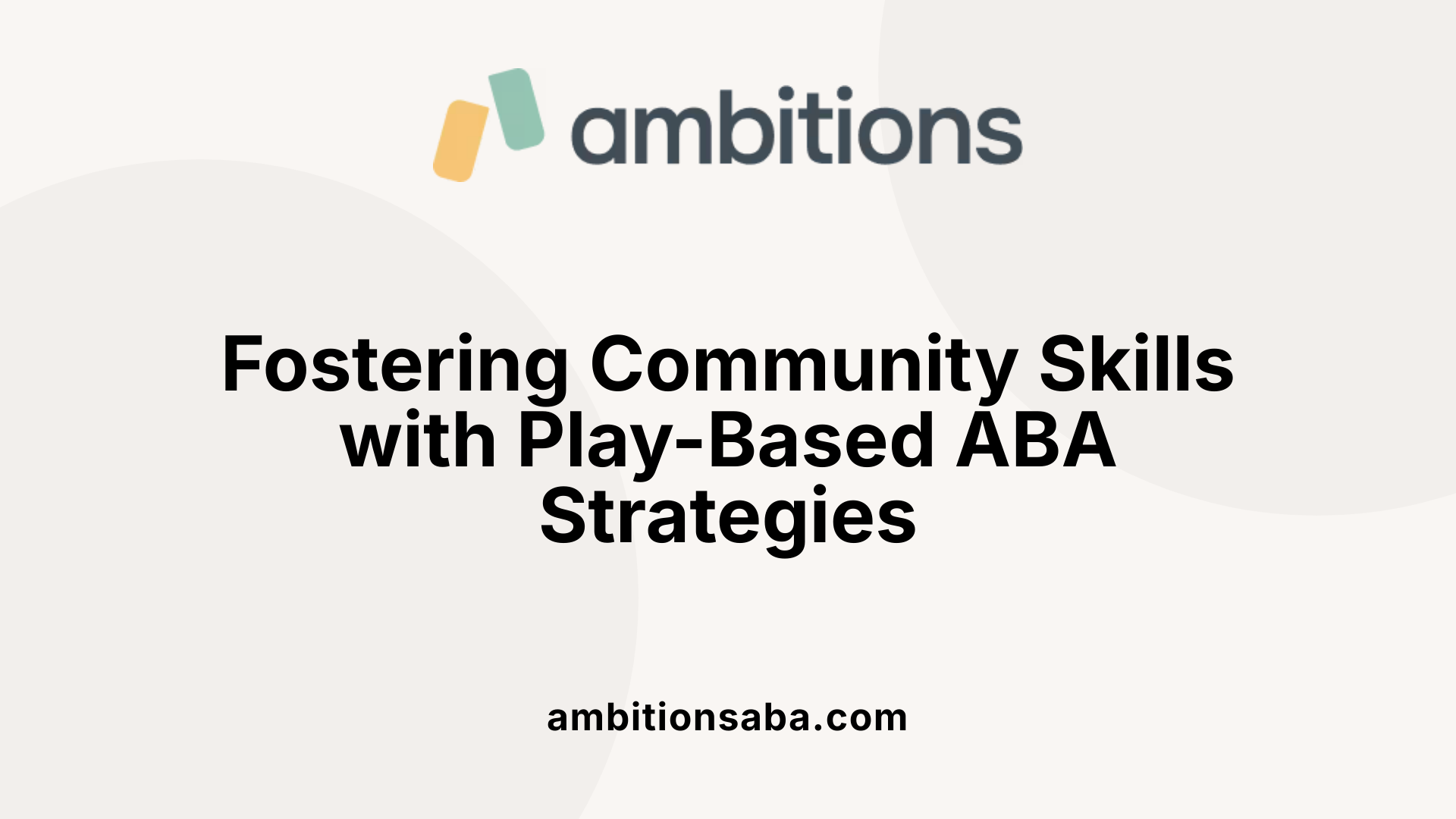
How does ABA incorporate community readiness skills through play-based methods and play therapy?
Applied Behavior Analysis (ABA) effectively promotes community readiness by using play-based strategies that align with natural routines and activities. These approaches help children develop essential social, communication, and independence skills needed for active participation in community settings.
Therapists often employ methods such as the Early Start Denver Model and Pivotal Response Training. These techniques focus on play and everyday routines, making learning engaging and relevant. Through structured play, children practice behaviors like sharing, taking turns, following directions, and navigating social interactions in a fun, supportive environment.
This approach gradually introduces real-world contexts, helping children transfer learned skills from familiar settings to broader community environments. For example, children may practice making choices at a pretend grocery store or engaging in social games that mimic community activities.
Play-based ABA emphasizes natural, meaningful experiences to boost confidence and competence. It encourages children to explore their surroundings safely while acquiring skills that make community participation more accessible and enjoyable. By using play as a tool, ABA fosters independence and helps children participate fully in their communities, laying a foundation for lifelong social integration and success.
Collaborative Approaches and Long-Term Impact of ABA
How does family training and collaboration enhance ABA therapy?
Family involvement is a vital part of successful ABA programs. Therapists work closely with parents and caregivers to ensure that teaching strategies are reinforced consistently across home and community settings. This collaboration involves training families on how to apply techniques like prompting, reinforcement, and visual supports. When families are actively engaged, children can practice and generalize skills more effectively, which speeds up progress.
Training sessions often include teaching routines, communication skills, and behavior management strategies. Empowered families are better equipped to handle daily challenges, leading to more stable and durable improvements in their child's independence.
What are the long-term benefits of ABA in supporting development?
ABA offers widespread advantages that extend into adulthood. Early intervention can result in improved language, social, and adaptive behaviors, laying a foundation for a more independent life. As children grow, ABA can help them develop skills necessary for community participation, such as self-care, decision-making, and vocational readiness.
Long-term benefits include increased academic success, greater social inclusion, and improved quality of life. Many teens and adults who received ABA therapy report better self-management, more meaningful relationships, and improved ability to navigate daily tasks.
| Aspect | Long-Term Impact | Explanation |
|---|---|---|
| Community Engagement | Enhanced social participation | Teaching social cues and interaction skills foster better peer and community relationships |
| Independence | Greater self-sufficiency | Developing daily living skills and self-care routines lead to autonomous functioning |
| Vocational Skills | Employment readiness | ABA addresses work-related skills such as decision-making and task completion |
| Emotional Resilience | Improved mental health | Promoting emotional regulation reduces anxiety and behavioral challenges |
Overall, ABA's structured, data-driven approach promotes lifelong skills that improve individuals' integration into society and support their ongoing development.
Fostering Community Engagement for Lifelong Success
Building community readiness skills through ABA is a comprehensive process that integrates play-based methods, structured techniques, and family involvement to prepare children and individuals with autism for meaningful engagement in society. By focusing on social, communication, and daily living skills, ABA empowers these individuals to navigate their environments confidently, foster relationships, and participate actively in community life. The evidence-based strategies and naturalistic approaches ensure that learning occurs in functional contexts, promoting generalization and long-term success. As communities become more inclusive and supportive, the role of ABA in nurturing independence and social integration becomes increasingly vital, ultimately leading to improved quality of life and lifelong fulfillment for individuals with autism.
References
- Fostering Independence: Building Home and Community Skills in ...
- How ABA Therapy Helps with Daily Living Skills
- Getting Your Child School-Ready with ABA Therapy for Autism
- ABA and School Readiness: Building Positive Behavior - AutismCOE
- Social Skills: Helping Children Build Meaningful Connections
- ABA Therapy: Benefits of Early Intervention for Lifelong Growth
- Social Skills for Children in Inner Circle's ABA Therapy Programs


